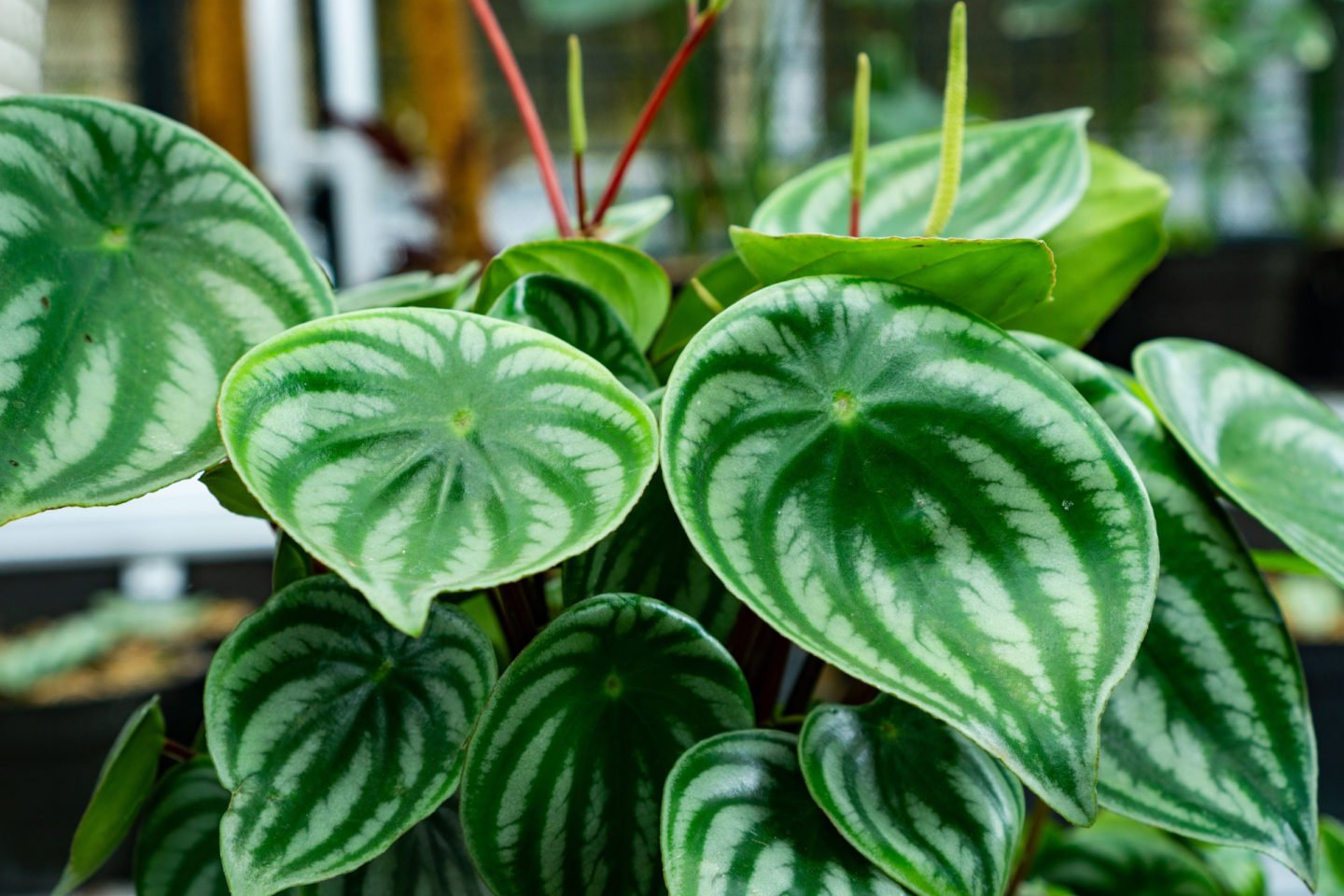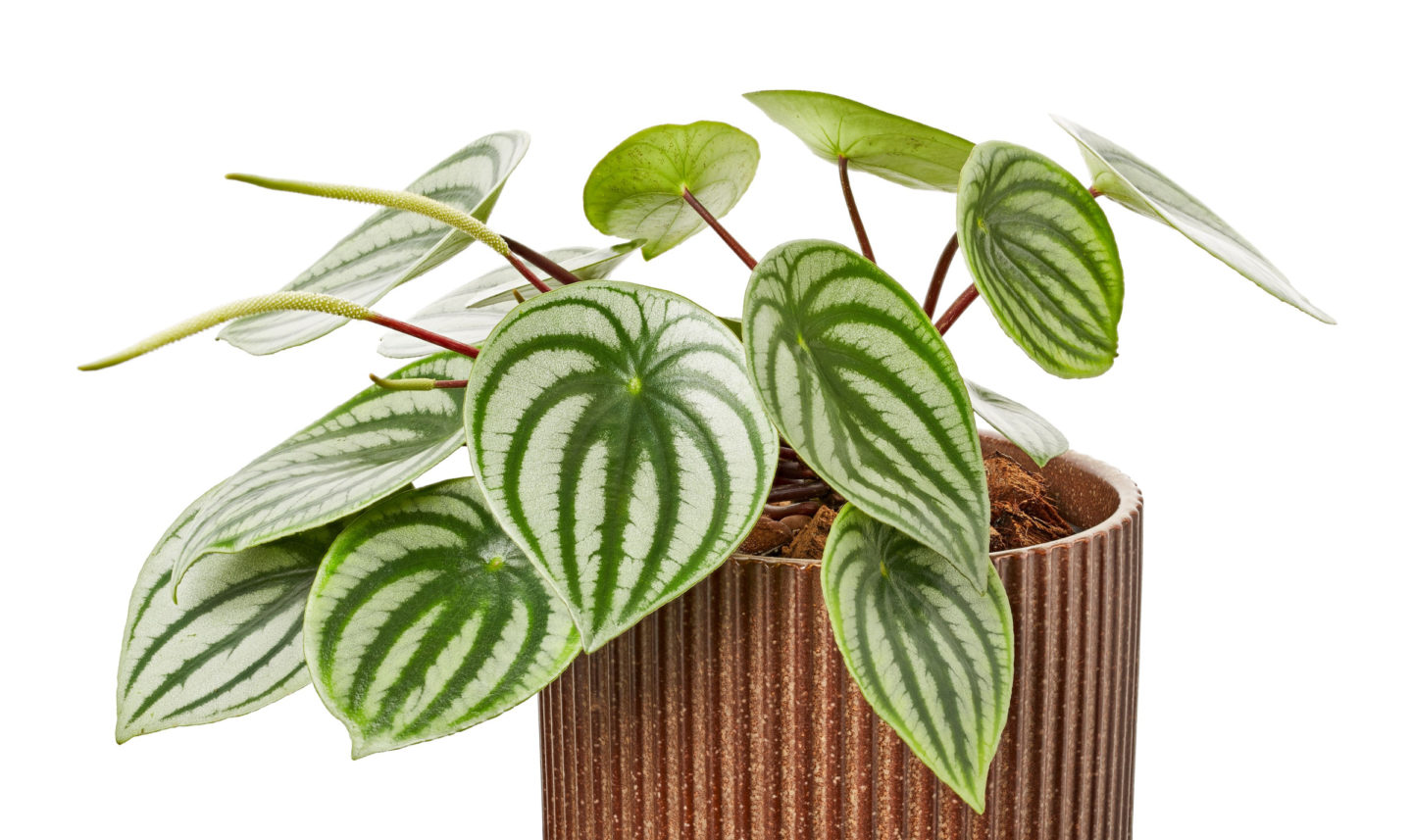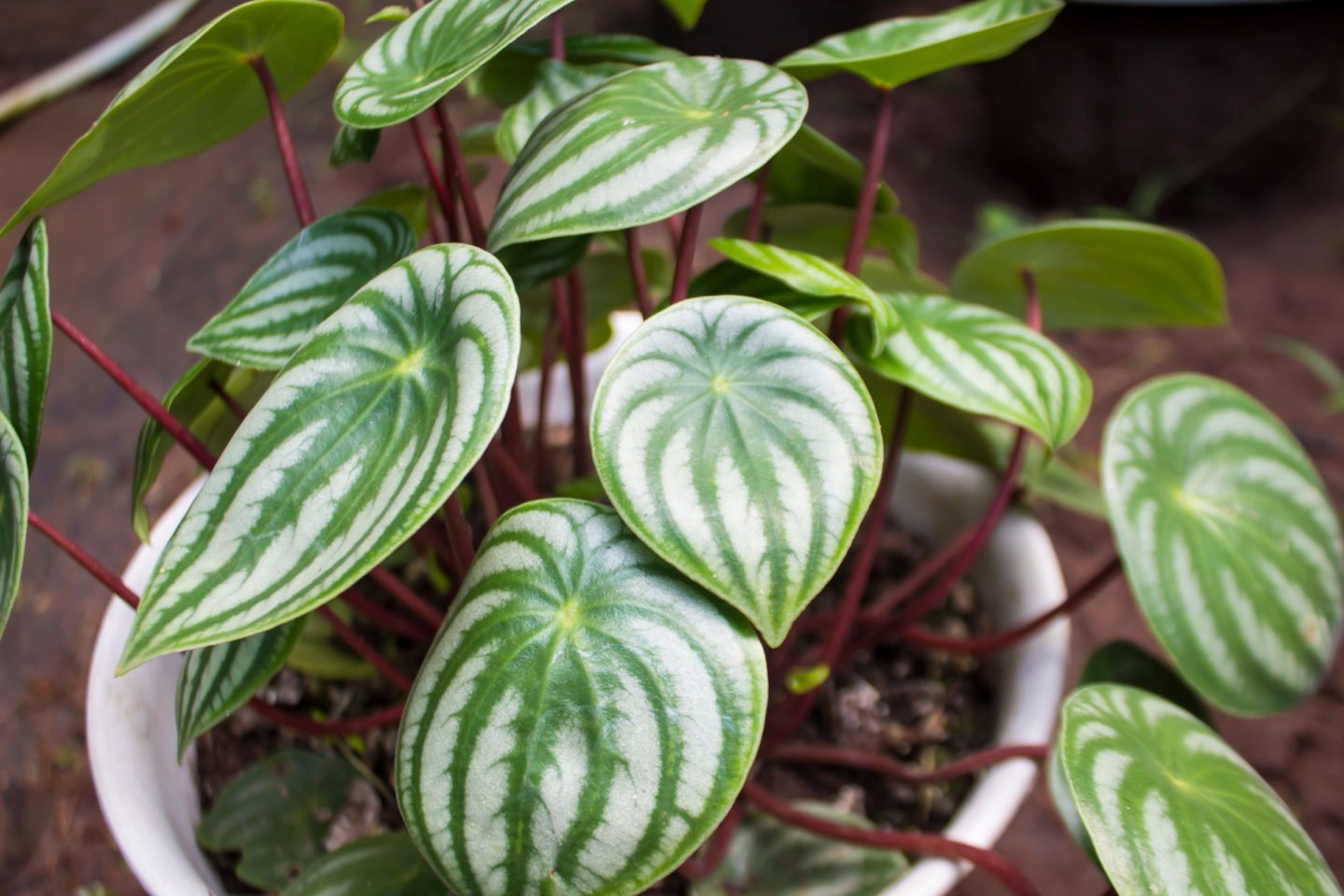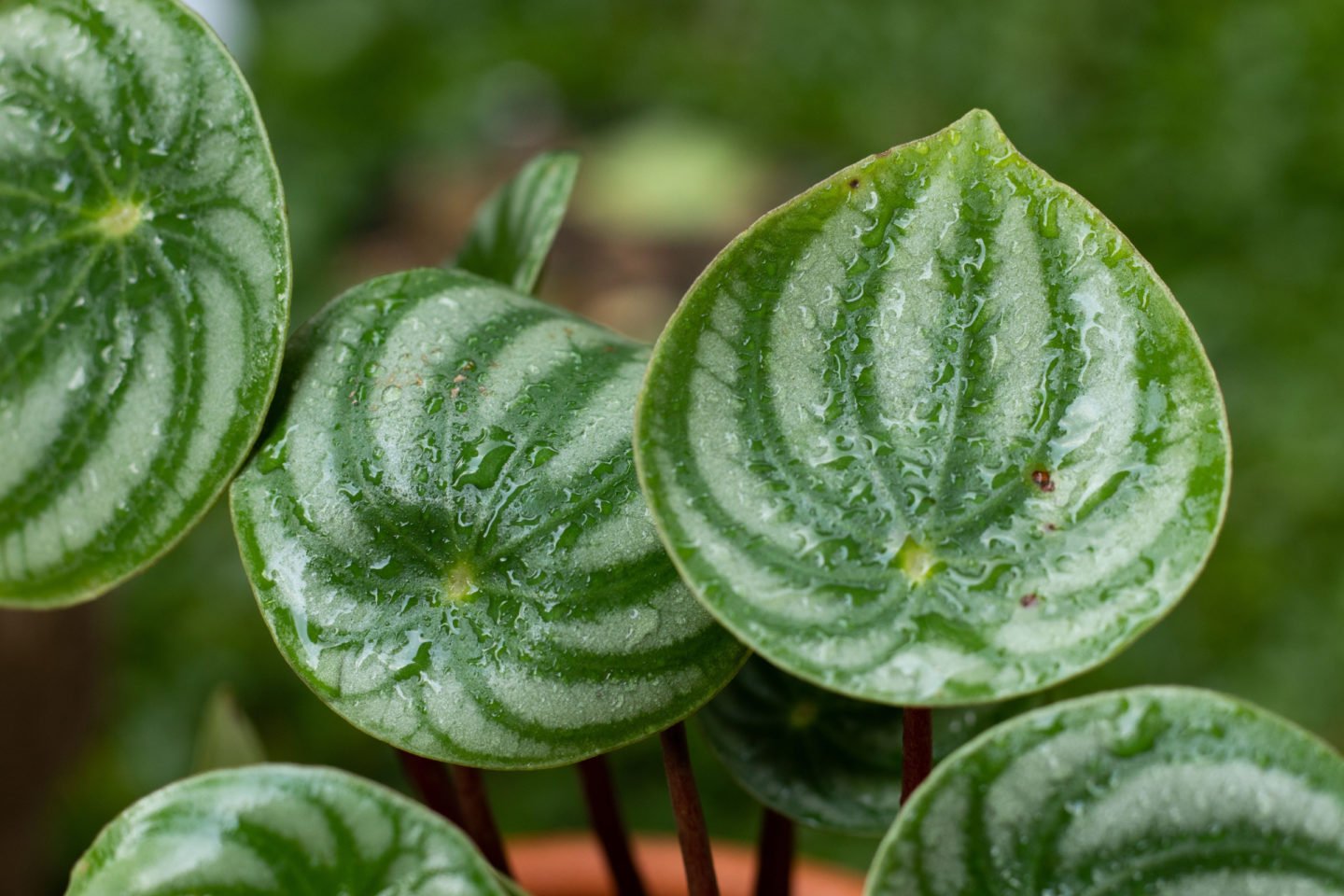The Watermelon Peperomia is one of the most loved among Peperomias. This plant got its name from the watermelon fruit due to its watermelon-looking leaves. Although the small, thin stems make this plant look fragile, they are pretty strong and grow well with minimal growing requirements.

If you’re planning to get Watermelon Peperomia as a houseplant, it will only take a matter of time for you to have numerous pots from the mother plant, as it is one of the few plants that requires no skill to propagate. You just need a new batch of soil and a few stem cuttings, and you’re good to go. Read on to learn everything about Watermelon Peperomias and how to propagate them.
Table of Contents
What is Watermelon Peperomia?

Peperomia argyreia is a very popular houseplant that is also sometimes called watermelon peperomia or watermelon begonia. It has lovely teardrop-shaped leaves with striking silver stripes. The red, thin stems that bear single leaves add to Watermelon Peperomia’s beauty.
This small houseplant comes from South America and does well in bright rooms and on tables. Since Watermelon Peperomia grows only 8 to 12 inches tall, you can effortlessly display it on shelves and in sizable terrariums. I suggest placing your watermelon peperomia where you can see it clearly because the silver stripes glow in bright light.
But pests and insects often eat Watermelon Peperomia, so make sure to keep them safe to avoid damage and diseases. Also, note that Watermelon Peperomia is a radiator plant, meaning it loves areas near vents and radiators.
Tips on Watermelon Peperomia Propagation
Propagating Watermelon Peperomia is very easy and non-technical. However, you must remember a few things when planning to propagate this indoor plant. Below are the most important things to consider:
Propagation Must-Haves
Although propagating your Watermelon plant is easy, you need to secure the following:
- Sharp scissors: The scissors you will use must be sharp and sterile to avoid bruising the mother plant and introducing fungal infections.
- Pot: The pot you need is self-draining, as Watermelon Peperomia develops root rot when overwatered.
- Potting soil: A mixture of peat moss or sphagnum moss and perlite is the ideal potting mix to avoid suffocating the growing roots.
- Plastic: You need a piece of plastic to cover the peperomia cutting to avoid direct sunlight and insects and common pests.
- Water: This is especially needed when doing water propagation.
Do Not Use Rooting Hormone
Even though this depends on the situation, I have had more trouble with propagation when I used rooting hormones. The Peperomia plant has sensitive stems, and rooting hormones tend to suffocate them. Besides, they propagate well without using any rooting agent.
Growing Season
Peperomia Watermelon is a tropical plant that loves humidity. With this, you must consider the propagation time to avoid peperomia frost. I suggest you start the propagation in late spring or early summer when there is humidity. However, if there is not enough humidity in your area, even in summer, you can place your Watermelon Peperomia plant near vents or radiators for that humidity.
Watermelon Peperomia Propagation Techniques

Leaf Cutting Method
Propagating a leaf cutting is the easiest propagation method. Simply follow these steps.
- Secure a Watermelon Peperomia leaf. You can either cut one from the mother plant or use one that fell off.
- Using your sharp and sterile scissors, cut the healthy leaf crosswise, just above the petiole.
- Fill your pot halfway with peat moss mixture, gently place the leaf cutting and add more soil to secure the leaf.
- Spray with enough water to hydrate the potting mix without overwatering it.
- Secure the pot in a plastic bag or a piece of plastic to protect the leaf.
- Place the pots in a warm place with indirect bright light for a few weeks.
- At around week 5, you will start to notice aerial roots growing out of the leaf cuttings, especially near the petioles. Once you see young, healthy leaf growth, then you can remove the plastic cover.
- Using a sphagnum moss mixture, you can transfer the rooted leaves into a larger pot.
- It is essential to let the newly transplanted Peperomia plant breathe; do not cover the whole thing with soil.
- Wait for the roots to develop another stem and leaf.
The Leaf With Stem Method
Propagating Peperomia using stem cutting is pretty similar to using leaf cuttings. However, instead of cutting the leaf, you will cut the stem 1-inch under the petiole and place the whole stem in the peat moss mixture, exposing the leaf and covering it with plastic. Like when using leaf cuttings, it takes around 4-5 weeks to see a new stem and healthy leaf.
Propagating in Water Method
Some people might find this hard to do, but it's my favorite way to spread the Watermelon Peperomia plant because it's easy to see how the roots grow. When doing this method, you must cut the stems longer than when propagating in a potting mix.
You should use clean water and change it occasionally to avoid infection. If you’re in a colder place, you can still cover the plant with plastic. Once you start noticing roots and new leaves after 4-5 weeks, you can transfer the plant to a pot with a peat moss mixture.
Watermelon Peperomia Care Guide

Growing Watermelon Peperomia is very simple. Just remember to place them somewhere with indirect sunlight to maintain their silver stripes; fertilize them twice a year; and, most importantly, keep the soil moist but never overwater them as they are prone to root rot. Pruning is unnecessary as they grow compact and look better with their luscious leaves.
Peperomia Varieties
There are over 1,500 varieties of Peperomia plants, but here are my personal favorites:
- Peperomia obtusifolia (Baby Rubber Plant)
- Peperomia argyreia (Watermelon Peperomia)
- Peperomia Caperata ‘Emerald’ (Emerald Ripple Peperomia)
- Peperomia Caperata ‘Rosso’ (Peperomia Rosso)
- Peperomia Clusiifolia (Peperomia Jelly)
- Peperomia Rotundifolia (Trailing Jade Peperomia)
- Peperomia Scandens (Cupid Peperomia)
- Peperomia Orba (Teardrop Peperomia)
- Peperomia Polybotrya (Raindrop Peperomia)
- Peperomia Puteolata (Parallel Peperomia)
Related Questions
Yes. You can utilize stems for both soil propagation and water propagation of Watermelon Peperomia.
Yes. You can cut the Peperomia leaf crosswise above the petiole and place it in self-draining pots.
You can start to see progress in weeks 4-5. You can then transfer the new plant to a pot once you see new stems and leaves growing.

Leave a Reply